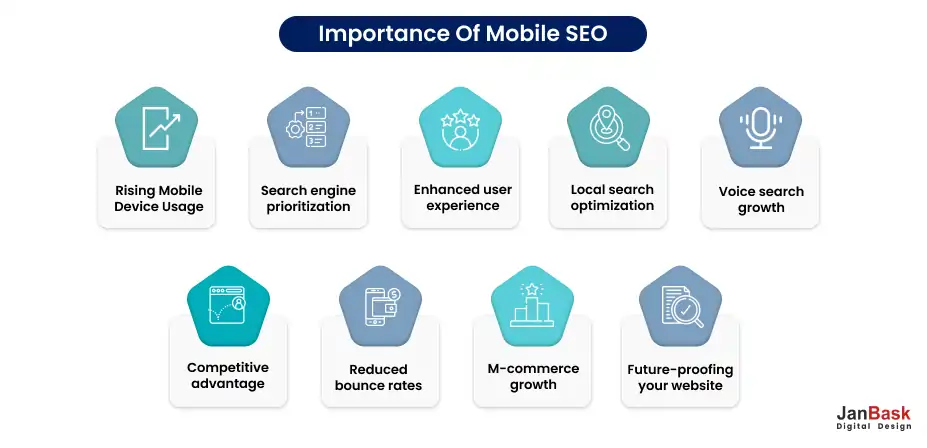Unlock the secrets of successful mobile SEO with these essential tips to avoid common pitfalls in your strategy today!

Image courtesy of via DALL-E 3
Table of Contents
- Introduction to Mobile-Friendliness
- Understanding the Importance of Mobile Users
- Best Practices for Mobile-Friendly Websites
- Tools to Test Mobile-Friendliness
- Improving Page Speed for Mobile
- How to Ensure Good Mobile User Experience
- Keeping Up with Mobile SEO Trends
- Conclusion
- Frequently Asked Questions (FAQs)
Introduction to Mobile-Friendliness
In this section, we will delve into the concept of mobile-friendliness and elucidate its significance, particularly within the realm of SEO (Search Engine Optimization).
What is Mobile-Friendliness?
Mobile-friendliness simply refers to the ability of a website to function effectively on mobile devices such as smartphones and tablets. This means that when someone accesses a mobile-friendly website on their phone, the site will appear correctly, and the user will be able to navigate through it with ease.
Why is SEO Important?
Now, let’s touch upon the fundamentals of SEO. SEO entails optimizing your website so that search engines like Google can easily find and rank it. When a website is mobile-friendly, it tends to perform better in search results, leading to increased visibility and more traffic to the site. This is why incorporating mobile-friendliness into your website is crucial for a successful SEO strategy.
Understanding the Importance of Mobile Users
In today’s digital age, more and more people are turning to their mobile devices to browse the internet. Whether it’s on a smartphone or tablet, the convenience and accessibility of mobile browsing have become increasingly popular. As a website owner, it’s crucial to recognize the significance of catering to this growing audience of mobile users to enhance their browsing experience.
The Rise of Mobile Users
The number of individuals using mobile devices to access the web has skyrocketed in recent years. It’s not uncommon to see people using their phones or tablets to shop online, read articles, or interact on social media platforms. With the increasing reliance on mobile technology, ensuring that your website is optimized for mobile devices is essential to reach this expanding audience.
Impact on Website Traffic
Having a mobile-friendly website can significantly impact your overall website traffic. When users have a positive experience navigating your site on their mobile devices, they are more likely to stay longer, explore different pages, and engage with your content. This increased engagement can lead to higher levels of website traffic and improved performance metrics, ultimately benefiting your online presence and visibility.
Ignoring Mobile Design
One common pitfall in making a website mobile-friendly is ignoring the design aspect. Some websites are designed only for desktops, which can make them difficult to use on mobile devices. It’s important to ensure that your website is responsive and can adapt to different screen sizes for a seamless user experience.
Slow Loading Times
Another mistake to avoid is having slow loading times on mobile devices. When a website takes too long to load, it can frustrate mobile users and lead them to abandon the site. Additionally, slow loading times can negatively impact your SEO, as search engines like Google prioritize fast-loading websites in their search results. To improve loading times, optimize images and videos, minimize server response times, and leverage browser caching.
Best Practices for Mobile-Friendly Websites
When it comes to creating a website that is user-friendly on mobile devices, there are certain best practices to keep in mind to ensure that your site is optimized for mobile users and supports good SEO. Let’s explore some effective strategies and tips for making your website mobile-friendly:

Image courtesy of via Google Images
Responsive Design
One of the key aspects of a mobile-friendly website is responsive design. This means creating a website that automatically adjusts its layout and content to fit any screen size, whether it’s a smartphone, tablet, or desktop computer. By implementing responsive design, you can provide a seamless and consistent user experience across all devices, which is not only user-friendly but also favored by search engines for better SEO rankings.
Optimized Images and Media
Another important aspect of mobile-friendly websites is optimizing images and media for quick loading times on mobile devices. Large images and videos can slow down a website’s loading speed, which can frustrate mobile users and negatively impact your SEO performance. Make sure to properly format and compress images and videos to reduce file sizes without compromising quality. This will help your site load quickly and smoothly on mobile devices, improving user experience and SEO rankings.
Tools to Test Mobile-Friendliness
Ensuring your website is mobile-friendly is crucial for SEO success. Here are some tools that can help you determine if your site meets the criteria for a seamless mobile experience.
Google’s Mobile-Friendly Test
One of the most popular tools for testing mobile-friendliness is Google’s own Mobile-Friendly Test. This free tool allows you to enter your website’s URL and quickly determine if it is optimized for mobile devices. The tool provides a detailed report on what aspects of your site need improvement to enhance mobile usability.
Other Handy Tools
In addition to Google’s tool, there are several other resources available to help you test your site’s mobile-friendliness. Websites like GTmetrix, Pingdom, and WebPageTest offer comprehensive analyses of your site’s performance on mobile devices. These tools provide insights into factors like page loading speed, responsive design, and user experience, allowing you to make informed decisions to improve your site’s mobile SEO.
Improving Page Speed for Mobile
One way to make sure that web pages load quickly on mobile devices is by compressing files. When we talk about compressing files, we mean making them smaller in size so that they can be loaded faster. Just like when you squish your clothes into a suitcase to make it fit better, compressing files helps make them easier and quicker to transport to your device. This can make a big difference in how fast a website loads on your phone or tablet!

Image courtesy of via Google Images
Using a Content Delivery Network (CDN)
Another helpful tool for speeding up how fast web pages load on mobile devices is a Content Delivery Network or CDN. Think of a CDN as a delivery service that brings the website content closer to you. Instead of waiting for a package to travel a long distance to get to your door, a CDN brings the content from the website closer to your device. This can help reduce the time it takes for the website to load on your phone, making your browsing experience smoother and quicker!
How to Ensure Good Mobile User Experience
In this section, we will cover best practices for ensuring users have a positive experience when visiting a site on a mobile device.
Simple Navigation
Having simple navigation on a mobile site is crucial for keeping users engaged. Make sure to provide easy-to-use menus and navigation buttons that are accessible and straightforward.
Readable Text and Buttons
When designing for mobile, ensure that the text on your site is easy to read on smaller screens. Use legible fonts and appropriate font sizes to enhance readability. Additionally, make sure that buttons are big enough and well-spaced to be easily clickable on touch screens.
Keeping Up with Mobile SEO Trends
In the fast-paced world of online technology and search engine optimization (SEO), staying up to date with the latest trends and updates is crucial. This is especially true when it comes to mobile SEO, where changes can happen frequently. Let’s explore why it is essential to keep track of these trends and how you can stay ahead of the game.

Image courtesy of via Google Images
Regularly Updating Content
One of the key aspects of mobile SEO is the freshness and relevance of your website content. Search engines like Google favor websites that regularly update their content, as it indicates that the site is active and providing up-to-date information to users. By consistently refreshing your content, you can improve your site’s visibility on mobile search results and attract more traffic.
Following Google’s Guidelines
Google, being the most popular search engine, frequently updates its algorithms and guidelines to improve user experience and provide relevant search results. It is essential to stay informed about these updates and ensure that your website complies with Google’s standards for mobile-friendliness and SEO. By following Google’s guidelines, you can avoid potential penalties and maintain a strong presence in mobile search rankings.
Conclusion
In this article, we’ve delved into the world of mobile-friendliness and its crucial role in SEO. Ensuring that your website is optimized for mobile devices is no longer just an option—it’s a necessity in today’s digital landscape. Let’s quickly recap the key points we’ve covered.
Recap of Mobile-Friendly Importance
We’ve learned that mobile-friendliness refers to a website’s ability to function seamlessly on mobile devices like smartphones and tablets. With the increasing number of people using their phones to browse the web, having a mobile-friendly site is essential to attract and retain visitors.
Final Tips
As a parting piece of advice, remember that a responsive design, optimized images and media, fast loading times, and easy navigation are all essential components of a successful mobile SEO strategy. Regularly updating your website content and staying informed about Google’s guidelines are also vital to maintaining a strong mobile presence.
By following these best practices and avoiding common pitfalls, you’ll be well on your way to improving your website’s mobile-friendliness and boosting your SEO rankings. Remember, the mobile landscape is constantly evolving, so staying informed and adapting to new trends is key to staying ahead of the game.
Want to turn these SEO insights into real results? Seorocket is an all-in-one AI SEO solution that uses the power of AI to analyze your competition and craft high-ranking content.
Seorocket offers a suite of powerful tools, including a Keyword Researcher to find the most profitable keywords, an AI Writer to generate unique and Google-friendly content, and an Automatic Publisher to schedule and publish your content directly to your website. Plus, you’ll get real-time performance tracking so you can see exactly what’s working and make adjustments as needed.
Stop just reading about SEO – take action with Seorocket and skyrocket your search rankings today. Sign up for a free trial and see the difference Seorocket can make for your website!
Frequently Asked Questions (FAQs)
What is the easiest way to check if my site is mobile-friendly?
If you want to quickly see if your website is mobile-friendly, you can use Google’s Mobile-Friendly Test tool. It’s a free and easy way to check if your site is optimized for mobile devices. Simply enter your website’s URL into the tool, and it will analyze your site to determine if it is mobile-friendly or if there are areas that need improvement.
How often should I check my site for mobile-friendliness?
It is recommended to regularly monitor and test your website for mobile-friendliness, especially as technology and user expectations evolve. As a best practice, consider checking your site’s mobile-friendliness every time you make updates or changes to your website. This will help ensure that your site continues to provide a seamless experience for mobile users and remains optimized for search engines.







